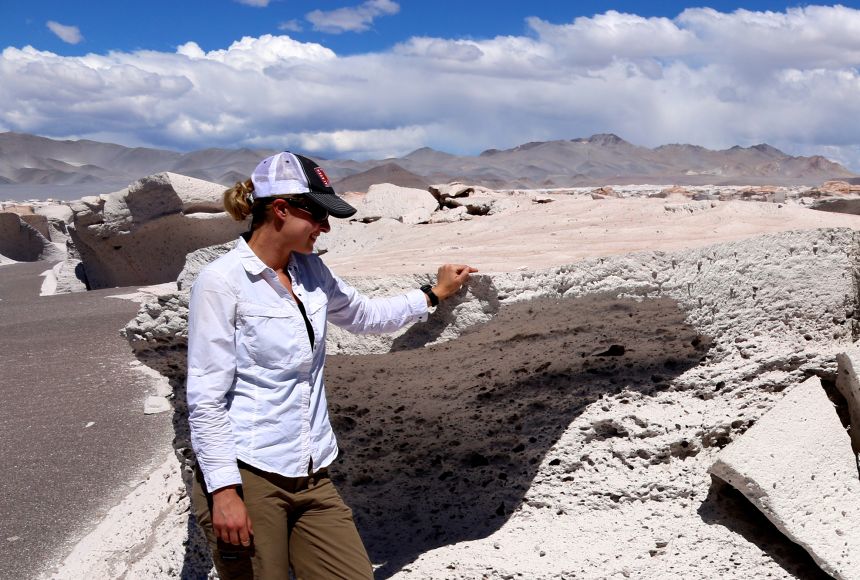There are many things science can predict. It can predict the path that an asteroid will take as it travels across the solar system, the relative timing of a blizzard moving across the plains, and even the temperature and rainfall the next day, to a certain extent. But scientists have yet to develop the tools to predict the timing and magnitude of volcanic eruptions. Being able to predict when volcanoes will erupt could save both lives and property. This is just what Dr. Stephanie Grocke, a volcanologist and National Geographic Explorer, has set out to do.
Grocke has always had a passion for nature and travel. As she explored the world, she often wondered how the Earth formed and why mountains exist. She realized that studying geology could help give her the answers she sought, or at least the tools she needed to begin to explain the world around her. While on a trip to Hawaii in the United States to do field work, she realized that volcanoes were really what she wanted to focus on.
Grocke earned her PhD in Volcanology from Oregon State University in 2014. Her research there, and the research she has conducted as a postdoctoral fellow at the Smithsonian’s National Museum of Natural History, has taken her around the world to study volcanic eruptions. Her goal? To understand the processes that lead to volcanic eruptions with the hope that someday scientists will be able to predict them.
Grocke has studied volcanoes that erupt explosively in the Andes of South America, in Iceland, and in Central America. On a 2017 National Geographic expedition, Grocke spent a month on an active volcano in Guatemala monitoring the activity using time-lapse photography. Visual storytellers Gabby Salazar and Ross Donihue worked to communicate Grocke’s findings to the people in the surrounding communities. In 2018, she worked in Iceland as a Fulbright-National Science Foundation Arctic Research Scholar studying the gases emitted from active volcanoes in the area. Her research involves making observations and collecting data and samples near active volcanoes, that she then examines in a lab. These steps, including using furnaces in the lab to try and recreate the pressures and temperatures the magma experiences below the surface, help her learn what is happening inside the Earth before an eruption and how the magma changes before the eruption occurs.
Having a better understanding of the processes that precede an eruption can lead to increased safety for those who live in the shadow of a volcano. Volcanic eruptions can be devastating to people living within the risk zones that surround volcanoes. Depending on the type of volcano, people may see various effects. Lava flows are typically slow, but destroy homes, roads, and other structures in their path. A mixture of hot gas and ash called a pyroclastic flow can travel as fast as 100-200 kilometers per hour (62-124 miles per hour) and can be fatal to people in the area. Ash and dust from an erupting volcano may cover everything and make it difficult to breathe. With little to no warning of when a volcano may erupt, people in the vicinity are left to battle these potential hazards. Currently, people who live near a volcano are encouraged to have a safety plan for their family, including putting together a first aid kit and creating a household evacuation plan. It is recommended that during a volcanic eruption people use a battery-powered radio to stay on top of the news and to listen for calls for evacuation. They are also advised to shut all windows to reduce the amount of ash that enters into buildings. Dr. Grocke knows that time is everything during a volcanic eruption and hopes that her efforts will help give citizens the warnings needed to best prepare for the event.
There are approximately 1,500 potentially active volcanoes on Earth, and yet, there is still no reliable way to predict when they will erupt. Dr. Stephanie Grocke is working to change that.
Grocke told WorldStrides that she is most proud of the fact that she has found a career that she loves, adding that her best days are when she gets to “go out in the field, climb a volcano, and get paid to do it.”
